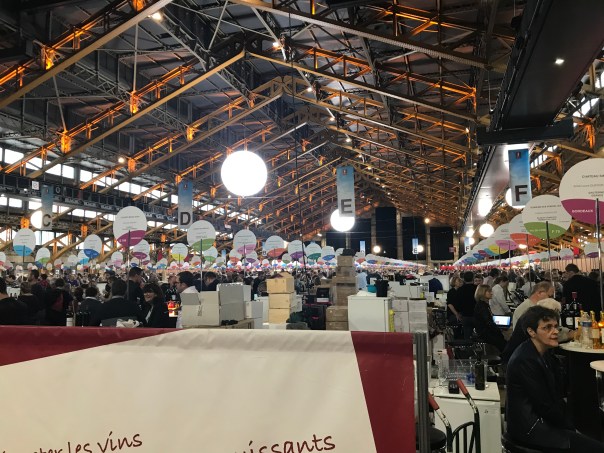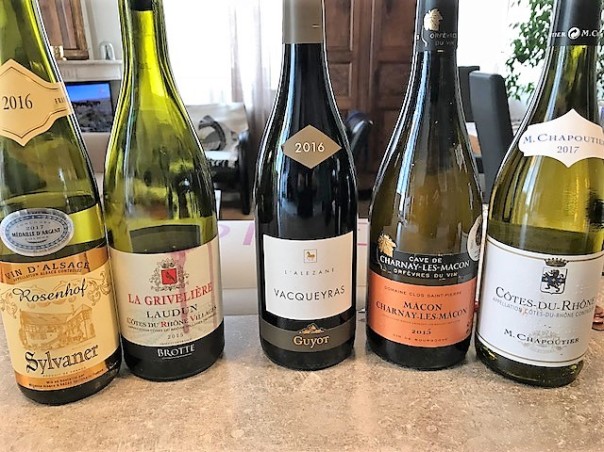This has been a very unique year for me in terms of wine exploration and enjoyment. After traveling full time between North America and Europe for 2 ½ years, Dorianne and I have settled in Lyon, France. Although we continue to travel for various reasons (I’m writing this in Southern California), we have been exploring the local wine scene in and around Lyon since July – and have discovered that there is a lot to learn, and even more to enjoy.

The year began with our annual few days in Pismo Beach, CA with our friends to explore wineries from Paso Robles, the Edna Valley, Santa Maria, and the Santa Rita Hills AVAs. The highlights of that trip were Sculptera Vineyards in Paso Robles (we all joined the wine club and bought two cases), Presqu’ile Vineyards in Santa Maria, and Pence Winery in the Santa Rita Hills. (LINK to Post about the last two)
The cases from Sculptera (mixed cases) were sent to Roam Miami (LINK), where Dorianne and I stayed last winter. A co-living/co-working space, Roam offered a haven of tropical peace and calm right next to downtown Miami and the Brickell area. We were surrounded mostly by Millennial digital nomads, and we conducted a few wine tastings and seminars to help educate them about wine enjoyment. (LINK to Post about Millennials and Wine).
In late March, we headed back to southern Oregon, Medford and Ashland, to see friends and explore more of the Rogue Valley wine scene. A month there took us to several wonderful wineries (LINK to Post) and some great restaurants.
The next highlight was two weeks in New York, staying in my daughter’s Harlem apartment, where we got to explore the burgeoning Harlem French wine and restaurant scene (LINK to Post about Harlem). Lots of good experiences there.
In June I traveled solo to Kelowna, British Columbia, the heart of the rich Okanagan Wine Region in western Canada (Link to Post about the Okanagan). Here I explored a variety of wineries and wines, as global warming has opened the region to growing red grapes, from Cabernet Sauvignon, to Tempranillo, to Syrah. Kelowna is a boomtown for vacation homes and recreation on its 90-mile-long glacial lake. The wine scene is growing more sophisticated with over 200 wineries in the area. Dirty Laundry Winery showcases much of what is fun in the Okanagan (LINK to Post).
After Kelowna, we spend some time in London (LINK to Post) it was off to Ireland’s Connemara area, where we drank Guinness for the most part. Then, in July, we made the move to Lyon (LINK to Post on Living in France).
Lyon has been a revelation in terms of wine. Centered between Burgundy to the north, the Rhône Valley to the south, Beaujolais to the west, and Jura to the east, there is an embarrassment of riches. And some surprises.
- The French don’t like to spend a lot of money on wine. I’m sure that there are exceptions, but you rarely see a bottle above 20€ in a grocery store or over 40€ in the local wine cave (shop). Restaurants generally sell wine bottles at or just above retail. And winemakers sell wines for half to 2/3’s what they would cost in the US. A “pot” is a 460ML bottle – a bit more than a half-bottle – of house wine which will cost 8 to 12€ in a Bouchon (Lyonnaise for bistro). There are also demi-pots and rare 500ML bottles.
- Box wines are better quality than I expected. For about 25€ you can get a 5-liter box of a very drinkable Luberon Valley red wine; 18€ for the rosé.
- Rosé wines are very good at 4€ per bottle, excellent at 7 to 10€. We drank rosés almost exclusively during the hot summer months.
- Maconnais Chardonnays are wonderful wines. Just north of Lyon, the vineyards of Macon produce some wonderfully approachable wines which sell for ½ or 1/3 of what their Burgundian cousins to the north fetch. Another nice surprise was Aligoté, the other Burgundy white – crisp, with a mineral/floral nose, it is a great value choice from the same winemakers who make the expensive stuff.
- In France, Cabernet Sauvignon is just Cabernet and Sauvignon Blanc is just Sauvignon. Cases in France are 6 bottles. Just FYI.
As I noted in the Moving to France Post (LINK), we tend to shop every day for fresh items at the open-air marchés and the mom-and-pop bakeries, butchers, etc. This may also include a stop at the wine cave to pick up a bottle or two and have a conversation with the proprietor about what is new and interesting.
We have not yet begun to explore the wineries and vineyards in the area – our focus has been on learning French, getting to know the city, and finding a flat to purchase – however, we expect to do a lot of that in 2018.
We are winding up 2017 in Southern California with friends and family. Our New Year’s Eve dinner with friends will feature a cold lobster appetizer that I am making and a Ken Brown Chardonnay to accompany it; then roast leg of lamb with a 2005 Opus One and a 1994 Harlan Estate Cabernet Sauvignon to see the year out with something wonderful.
Next week, we return to Pismo Beach to explore the Central Coast some more, then . . .
Who knows?
Thanks for being a part of this year on the blog.
As always, your comments and suggestions are welcomed!
Copyright 2017 – Jim Lockard












































